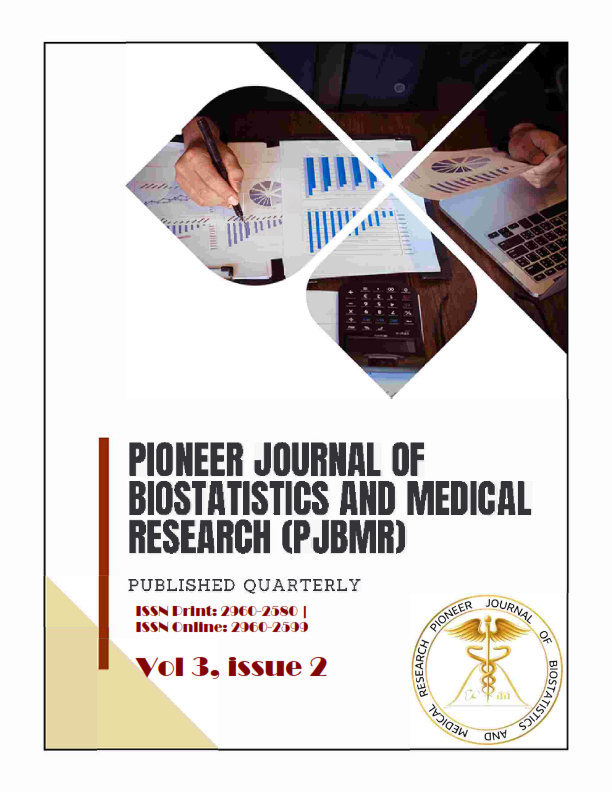Risk factors of hyperuricemia in type II diabetes mellitus patients
DOI:
https://doi.org/10.61171/v3.02.3Keywords:
Hyperuricemia, Type II diabetes mellitus, Body Mass Index, Life styleAbstract
Background: Pakistan has an increased incidence of type II diabetes mellitus, a serious national health problem. Hyperuricemia, which is marked by increased Serum Uric Acid (SUA) levels, often goes along with diabetes mellitus type II and raises the threat of Kidney disease, BMI, dietary intake, and other comorbid diseases all contribute significantly to hyperuricemia. The research on hyperuricemia among Pakistani diabetic type II patients is very little. Objectives: To identify the associated risk factors of hyperuricemia in type II diabetes mellitus. Method: An Analytical Cross-Sectional Study was conducted at Government Kot Khwaja Saeed Teaching Hospital Lahore, involving 362 participants recruited through convenient sampling over 9 months. Patients aged 30–60 with type II diabetes mellitus for at least one year were included, while those with type I or gestational diabetes, known patient of hyperuricemia, relevant medication use, or unwillingness to participate were excluded. Results: Key results show that 69.6% of patients had no hyperuricaemia levels, while 30.4% had hyperuricemia. The mean uric acid level ranged from 2.90 to 9.30 mg/dL, with an average of 5.60 ± 0.75 mg/dL. Female gender is the strongest indicator of hyperuricemia, while BMI, diabetes duration, glycemic control, and comorbidities showed no correlations. Hyperuricemia was highly prevalent among housewives, indicating potential lifestyle factors. These findings stress the need for focused treatments, especially for women, to reduce hyperuricemia risks in TDM II female patients. Conclusion: This study reveals that female gender, height, housewives, low saturated fat foods and eating of the lean meats (poultry, fish, eggs etc.,) are the strongest predictor of hyperuricemia, with higher prevalence and odds. Factors like duration of diabetes mellitus in years, glycemic control, BMI and comorbidities showed no significant associations. Housewives exhibited a higher prevalence, suggesting lifestyle-related influences. These findings emphasize the need for targeted measures among females to reduce hyperuricemia risks and complications.
Downloads
Downloads
Published
Issue
Section
License
Copyright (c) 2025 Muhammad Kashif Shahzad Virk, Muhammad Yaqoob (Author)

This work is licensed under a Creative Commons Attribution 4.0 International License.












